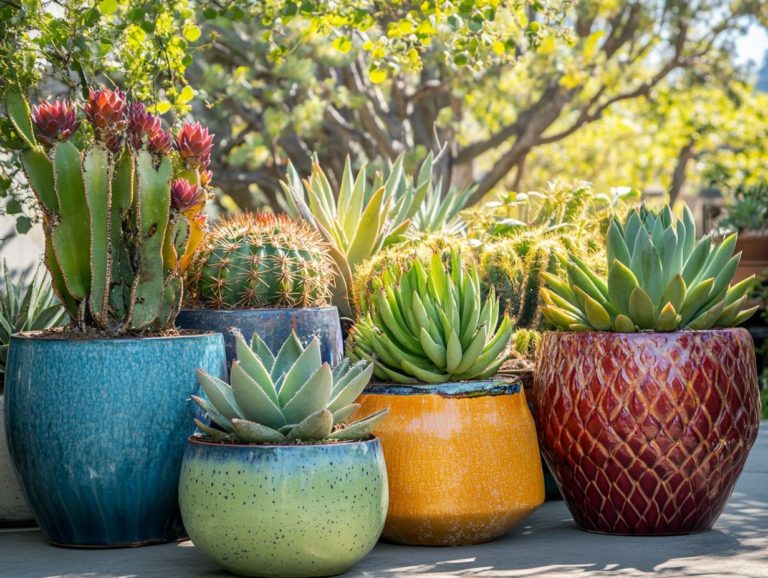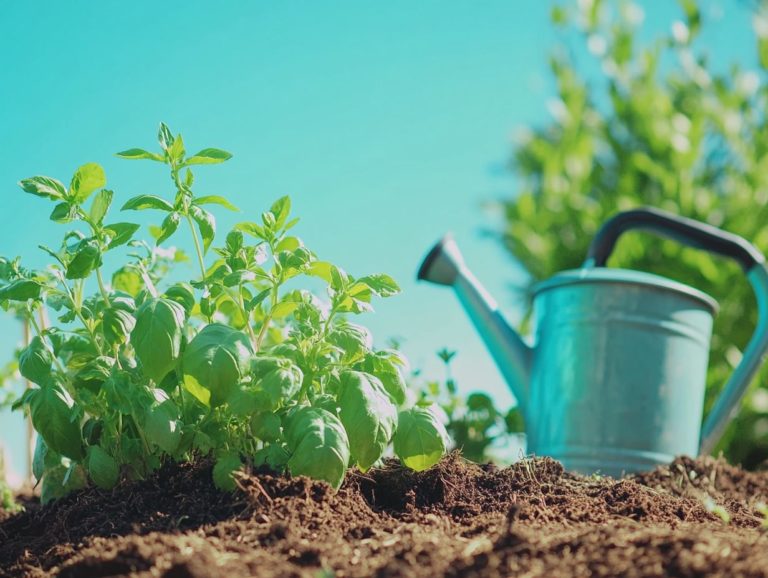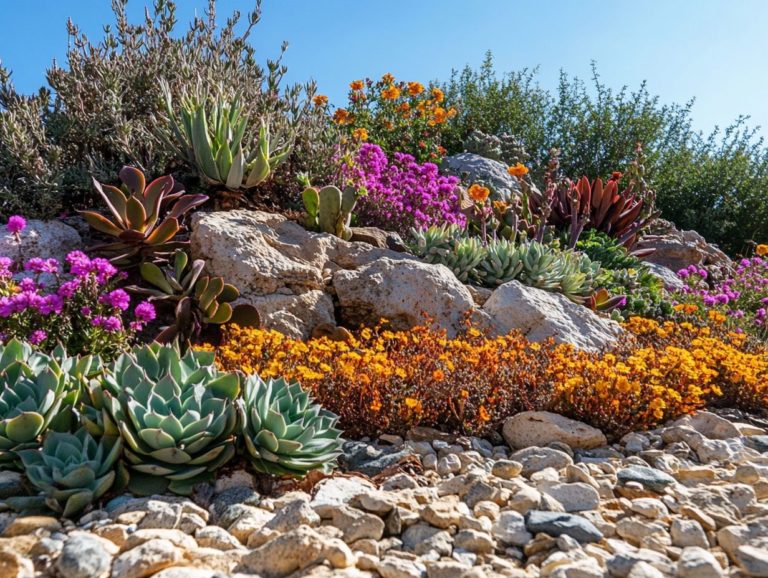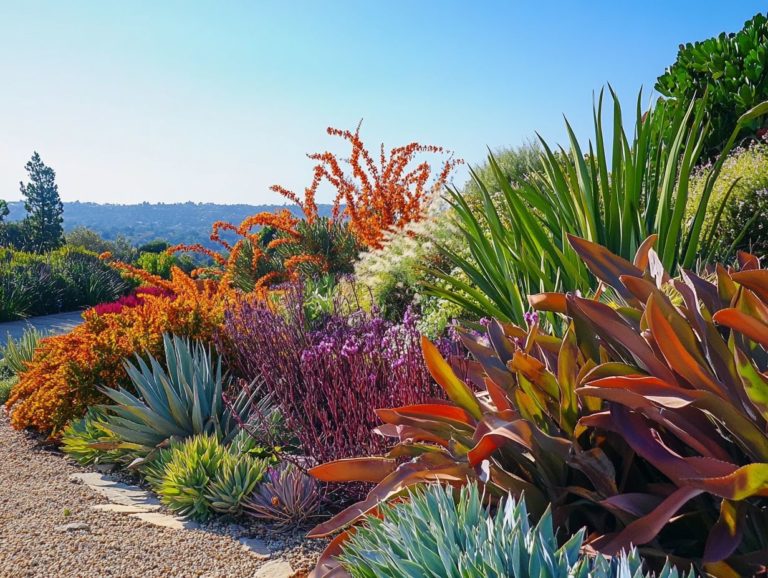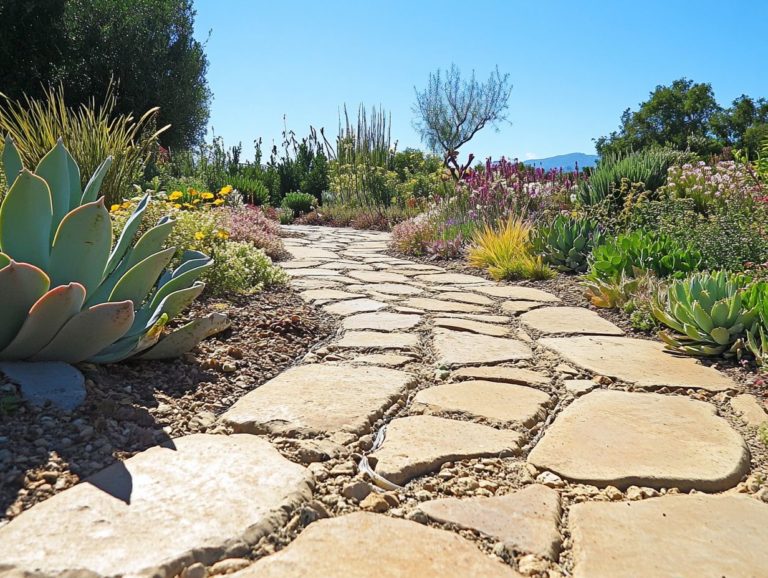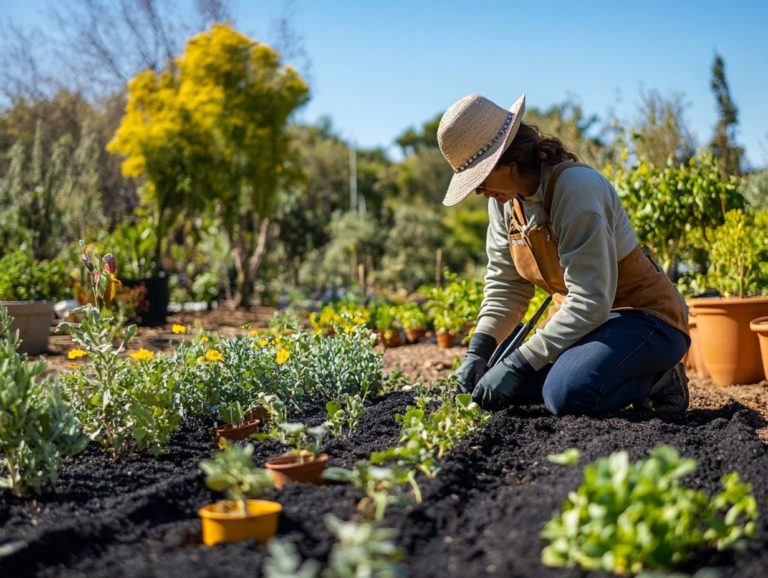What Soil Types Favor Drought-Resistant Plants?
Drought-resistant plants are vital in today’s world. Water scarcity challenges our gardens and landscapes.
Understanding what makes these resilient plants thrive can impact your gardening success.
This article explores the characteristics of drought-resistant plants. It also covers the best soil types and offers practical tips for planting and care.
Whether you are an experienced gardener or just starting, you will find valuable insights here. These tips will help you create a water-efficient garden.
Contents
- Key Takeaways:
- Understanding Drought-Resistant Plants
- Factors Affecting Plant Growth in Different Soil Types
- Best Soil Types for Drought-Resistant Plants
- Planting and Caring for Drought-Resistant Plants
- Frequently Asked Questions
- What soil types favor drought-resistant plants?
- What are some characteristics of soil that favor drought-resistant plants?
- Can drought-resistant plants survive in clay soils?
- What types of nutrients do drought-resistant plants need from the soil?
- Are there specific pH levels that favor drought-resistant plants?
- How can I improve my soil for better growth of drought-resistant plants?
Key Takeaways:
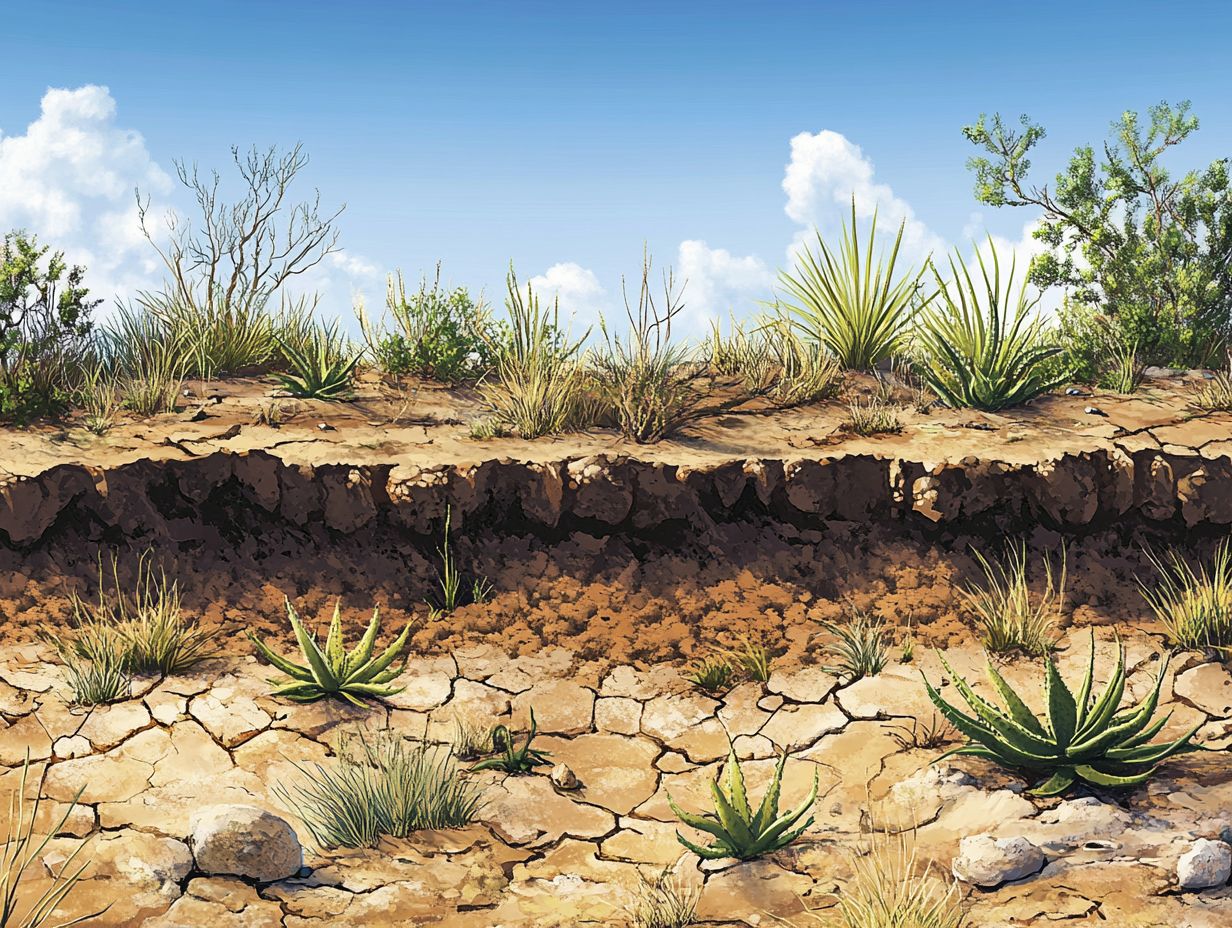
- Drought-resistant plants have unique traits that help them survive with less water.
- The type of soil significantly impacts a plant’s drought resilience. Sandy loam, clay loam, and silt loam are the best options.
- Proper planting techniques, such as selecting the right soil and providing suitable care, are crucial for their success.
Understanding Drought-Resistant Plants
Knowing about drought-resistant plants is essential for any gardener. These plants can thrive in tough conditions, keeping your garden vibrant and supporting local pollinators.
By selecting the right options like ornamental grasses and aromatic varieties you can boost your garden’s curb appeal. This choice also promotes sustainable gardening practices.
Consulting with a landscape expert can provide tailored advice on the best plants for your climate. This guidance will help you create a flourishing garden.
What Makes a Plant Drought-Resistant?
Drought-resistant plants have developed remarkable adaptations for low-water conditions. They are perfect for sustainable gardening in drought-prone areas.
These plants showcase various features that optimize water use. For example, many develop deep root systems to access moisture and reduce competition for water.
They often have thick, waxy leaves that minimize evaporation. This trait enhances their ability to retain moisture.
Consider succulents like aloe vera and native grasses. They need very little water, making them perfect for eco-friendly landscaping projects.
Factors Affecting Plant Growth in Different Soil Types
Grasping what influences plant growth in various soil types is vital. The soil’s composition and nutrient levels dictate which plants can thrive, including drought-tolerant varieties.
For the best growth, plants like hardy geraniums and flowering herbs need well-drained soil. This type retains moisture while providing essential nutrients.
Your choice between sandy and nutrient-rich soil will affect your garden’s health. Make the right decision to ensure your plants flourish.
Soil Composition and Nutrient Availability
The composition of your soil and the availability of nutrients are critical elements that determine your success in outdoor gardening. These factors directly influence the types of plants you can grow and their overall vitality.
By understanding how different soil components such as sand, silt, and clay interact, you can gain valuable insights into your gardening endeavors.
Sand improves drainage and aeration, making it perfect for drought-tolerant plants that flourish in well-drained conditions. Silt excels at retaining moisture and nutrients, promoting lush growth even in challenging climates.
Meanwhile, clay, despite being nutrient-rich, may cause drainage issues if not properly balanced.
Don t skip testing your soil! It s the key to unlocking your garden’s potential. This process enables you to identify any nutrient deficiencies and amend your soil accordingly.
For optimal plant growth, adding tailored nutrients can significantly elevate your gardening experience, especially if you aim to cultivate many types of plants, including resilient, drought-tolerant varieties.
Water Retention and Drainage
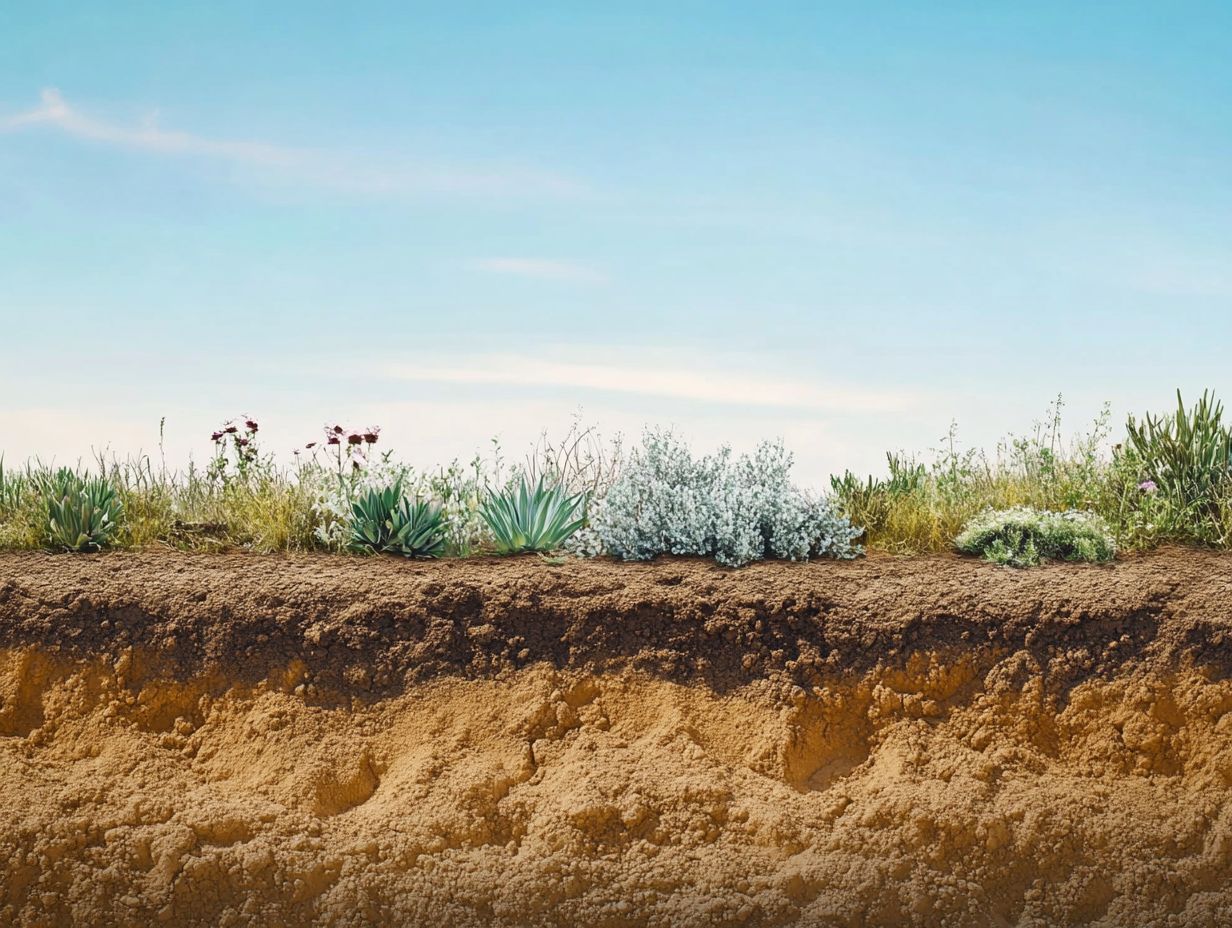
Water retention and drainage are crucial factors that dictate how well your plants adapt to drought conditions, significantly influencing their growth and survival across different soil types.
These capabilities can vary widely; for instance, clay soils tend to hold more moisture but drain poorly. In contrast, sandy soils facilitate quick drainage but often struggle to retain sufficient water for plants.
Striking this balance is essential, especially when considering the planting of low-water species, as their success heavily depends on the characteristics of the underlying soil.
To enhance both soil drainage and retention in your garden, consider incorporating organic matter, such as compost. This improves soil structure, promotes aeration, and helps retain moisture.
Using mulch minimizes evaporation, further supporting the growth of drought-tolerant plants.
Best Soil Types for Drought-Resistant Plants
Selecting the ideal soil types for drought-resistant plants is crucial for fostering their optimal growth and enhancing their resilience in challenging environments, making it important to understand why choose drought-resistant plants.
By understanding the specific needs of these plants, you can create a nurturing foundation that supports their thriving even in less-than-ideal conditions.
Sandy Loam
Sandy loam stands out as an exceptional choice for cultivating drought-resistant plants, thanks to its remarkable drainage capabilities and balanced moisture retention.
This unique blend prevents root rot, which occurs when roots sit in waterlogged soil, and fosters deep root development, crucial for the survival of plants that thrive in arid conditions.
The airy texture of sandy loam creates an ideal environment for air circulation, promoting vibrant growth.
To elevate the nutrient content and enhance moisture retention, incorporate organic matter like compost or well-rotted manure. This enriches the soil and bolsters its ability to hold water.
Additionally, mulching around your plants can further conserve moisture and regulate soil temperature, ultimately leading to improved plant health and resilience.
Clay Loam
Clay loam is a nutrient-rich soil type celebrated for its remarkable moisture retention, making it an excellent choice for certain drought-resistant plants that crave more nutrients.
However, this moisture-retaining quality can create challenges for plants with different water needs, as clay loam tends to compact and may lead to waterlogging.
For those tending to a diverse plant selection, it becomes essential to strike a balance in moisture levels to prevent root rot in more water-sensitive plants.
To achieve this, consider implementing strategies like incorporating organic matter to enhance drainage and aeration. Adding sand or gravel can facilitate better water movement, ensuring that both drought-tolerant varieties and moisture-loving plants can thrive together in a harmonious garden ecosystem.
Silt Loam
Silt loam offers a great balance of moisture retention and drainage. This makes it an excellent choice for many drought-resistant plants.
This soil type combines silt, clay, and sand particles. Its crumbly texture enhances aeration and allows strong root penetration.
Its fine texture ensures excellent nutrient availability. This makes it particularly advantageous for a wide array of flora, from vibrant annual flowers to resilient perennial shrubs.
In drought conditions, silt loam retains moisture more effectively than sandier soils. This allows plants to stay hydrated for a longer period.
To further elevate the health and growth of your plants in silt loam, consider incorporating organic matter like compost. This addition enriches nutrient content and improves soil structure.
Mulching helps reduce evaporation and protects roots during dry spells. This gives your plants the best chance to thrive.
Planting and Caring for Drought-Resistant Plants
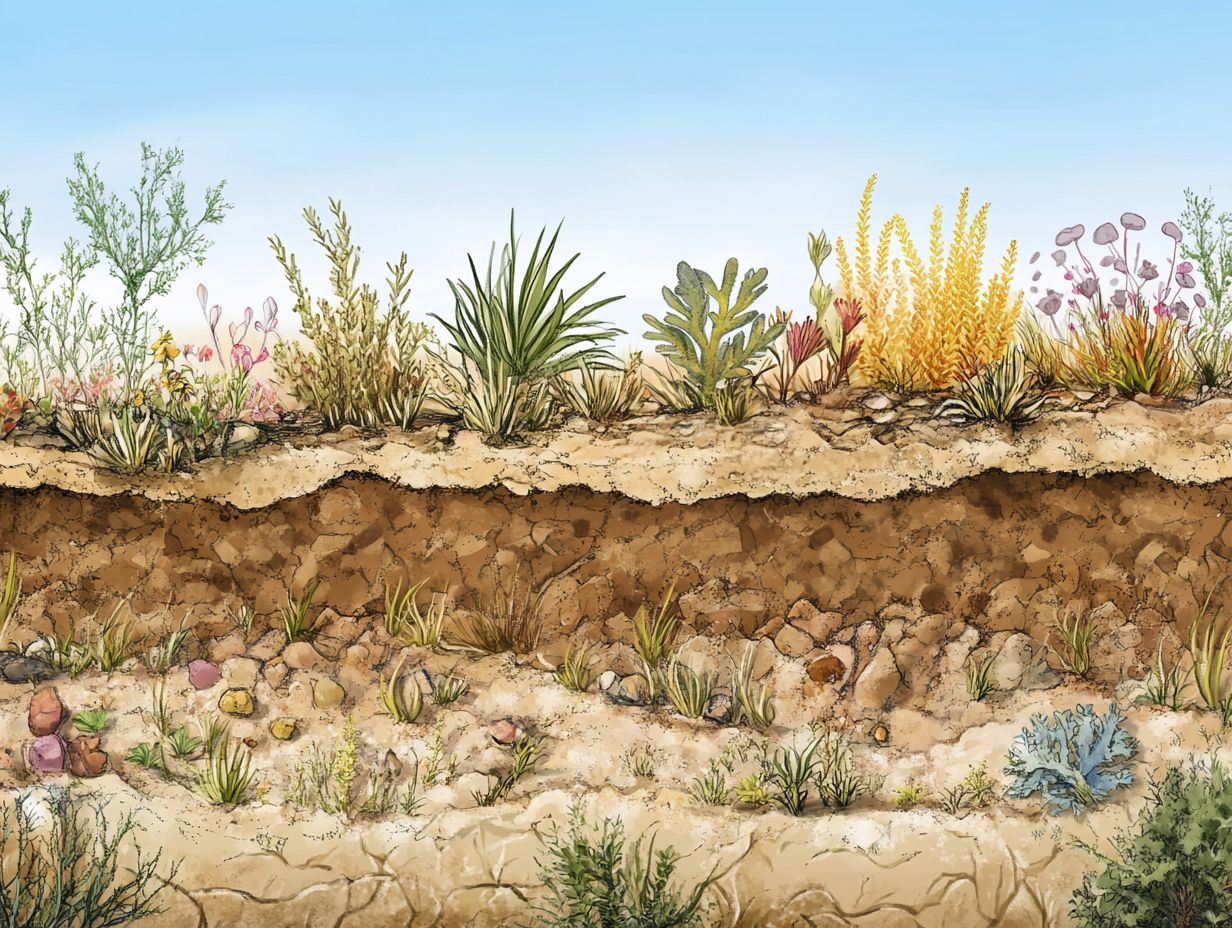
Want your drought-resistant plants to thrive? Here are essential planting and care tips to enhance their resilience and elevate the aesthetic allure of your garden design!
Choosing the Right Soil for Planting
Choosing the right soil for planting is crucial for the success of your drought-resistant plants. It influences their growth, health, and the overall beauty of your garden.
Drought-tolerant plants flourish in well-draining soil. It s important to focus on sandy or loamy types that retain moisture without becoming waterlogged.
When selecting soil, take into account the specific moisture requirements of your chosen plant species. For example, succulents thrive with less organic matter, while certain native grasses may benefit from a richer blend.
You can easily test your soil composition with home kits that analyze pH and nutrient levels. If you discover any deficiencies, integrate amendments like compost or coarse sand to optimize conditions.
This ensures that all your plants can reach their full potential in a water-efficient manner.
Watering and Maintenance Tips
Want your drought-resistant plants to thrive? Here are essential watering and maintenance tips to keep them healthy and vibrant!
By employing thoughtful techniques and strategies, you can significantly enhance the water efficiency of these resilient varieties.
Scheduling your watering sessions during the early morning or late afternoon minimizes evaporation. This allows your plants to absorb moisture effectively.
Consider utilizing methods like drip irrigation (a method that delivers water directly to the roots) or soaker hoses (hoses that release water slowly into the soil) to deliver water where it s needed most.
Maintaining a layer of mulch around your plants not only conserves soil moisture but also helps regulate temperature and suppress weeds. Incorporating organic compost improves soil structure and boosts its moisture-retention capabilities.
This ensures your drought-tolerant plants thrive even under challenging conditions.
Frequently Asked Questions
What soil types favor drought-resistant plants?
Drought-resistant plants thrive in well-draining soils, such as sandy or loamy soils.
What are some characteristics of soil that favor drought-resistant plants?
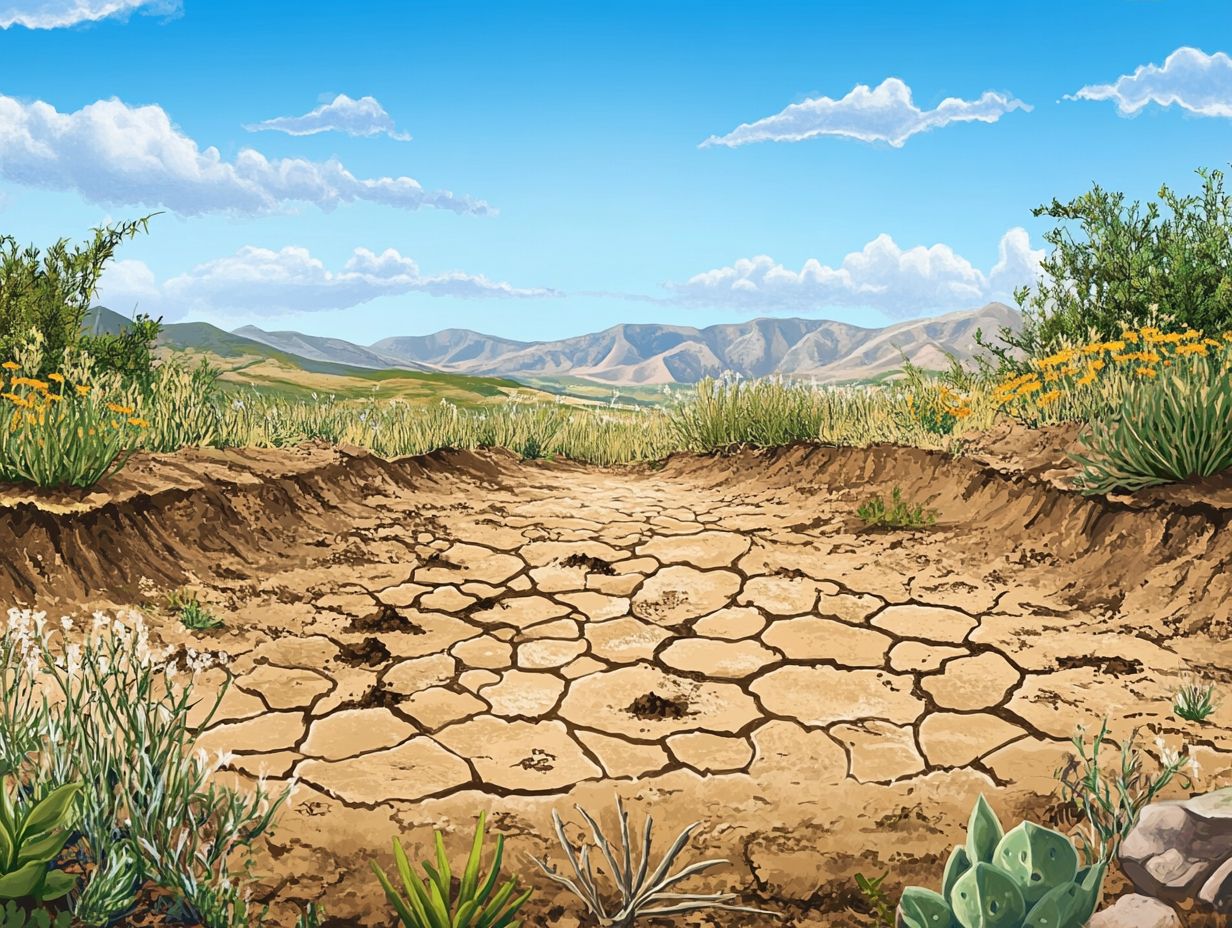
Soils that have good water-holding capacity, low soil compaction, and adequate organic matter content are ideal for drought-resistant plants.
Can drought-resistant plants survive in clay soils?
While clay soils can be challenging for some plants, there are drought-resistant varieties that can survive in these types of soils.
However, it is important to ensure proper drainage and amendment of clay soils to create a more favorable environment for these plants.
What types of nutrients do drought-resistant plants need from the soil?
Drought-resistant plants require a well-balanced supply of essential nutrients, such as nitrogen, phosphorus, and potassium, to support their growth and survival in dry conditions.
Are there specific pH levels that favor drought-resistant plants?
Most drought-resistant plants thrive in slightly acidic soils, ideally between pH 6.0 and 6.8. However, each plant species may have unique preferences, so check the specific pH needs for the plants you’re considering.
How can I improve my soil for better growth of drought-resistant plants?
Improve your soil by adding organic matter like compost or mulch. This helps retain water and increases nutrient availability.
Ensure proper drainage and regularly monitor pH levels. This creates the best environment for your drought-resistant plants to flourish!

